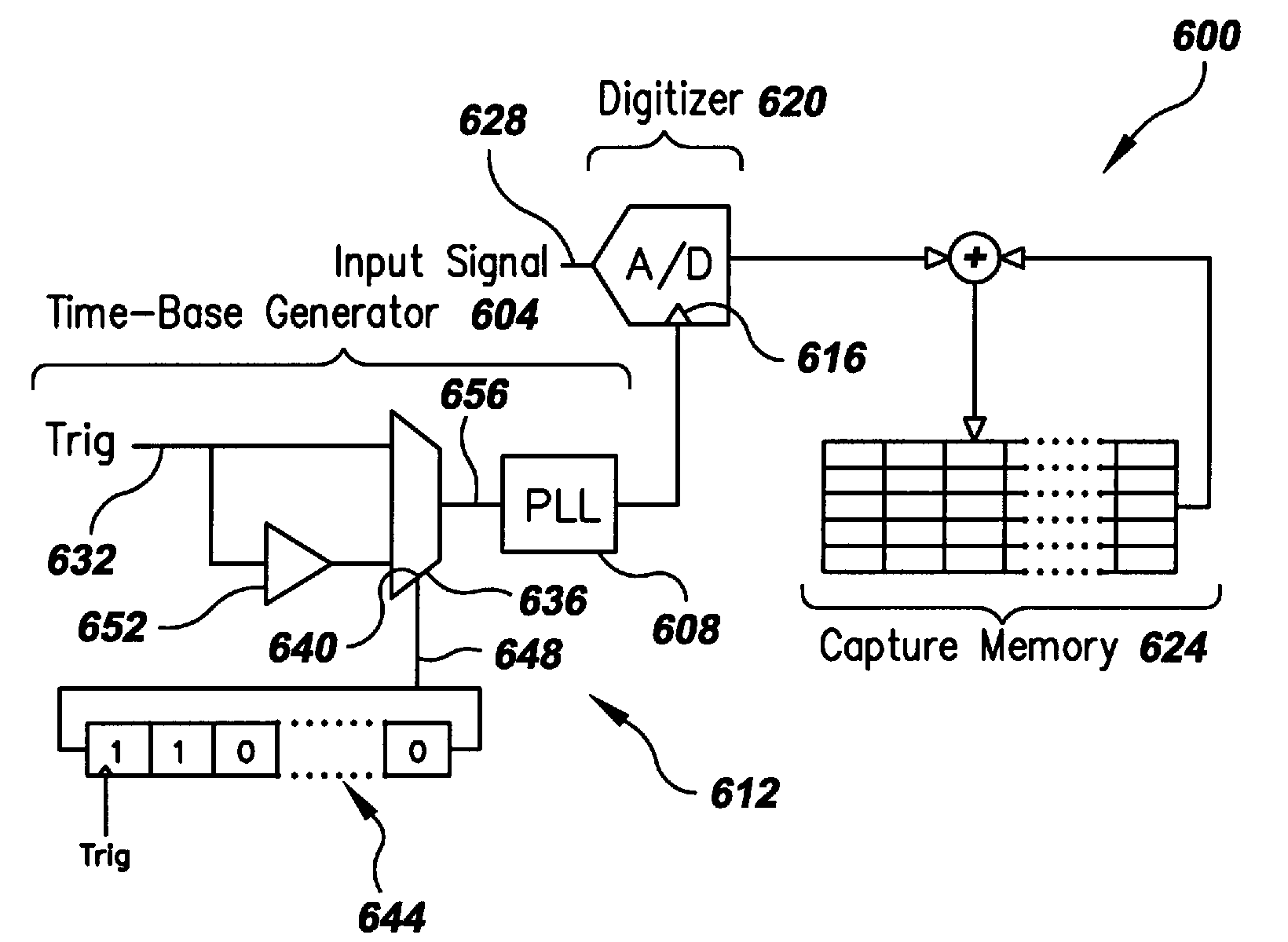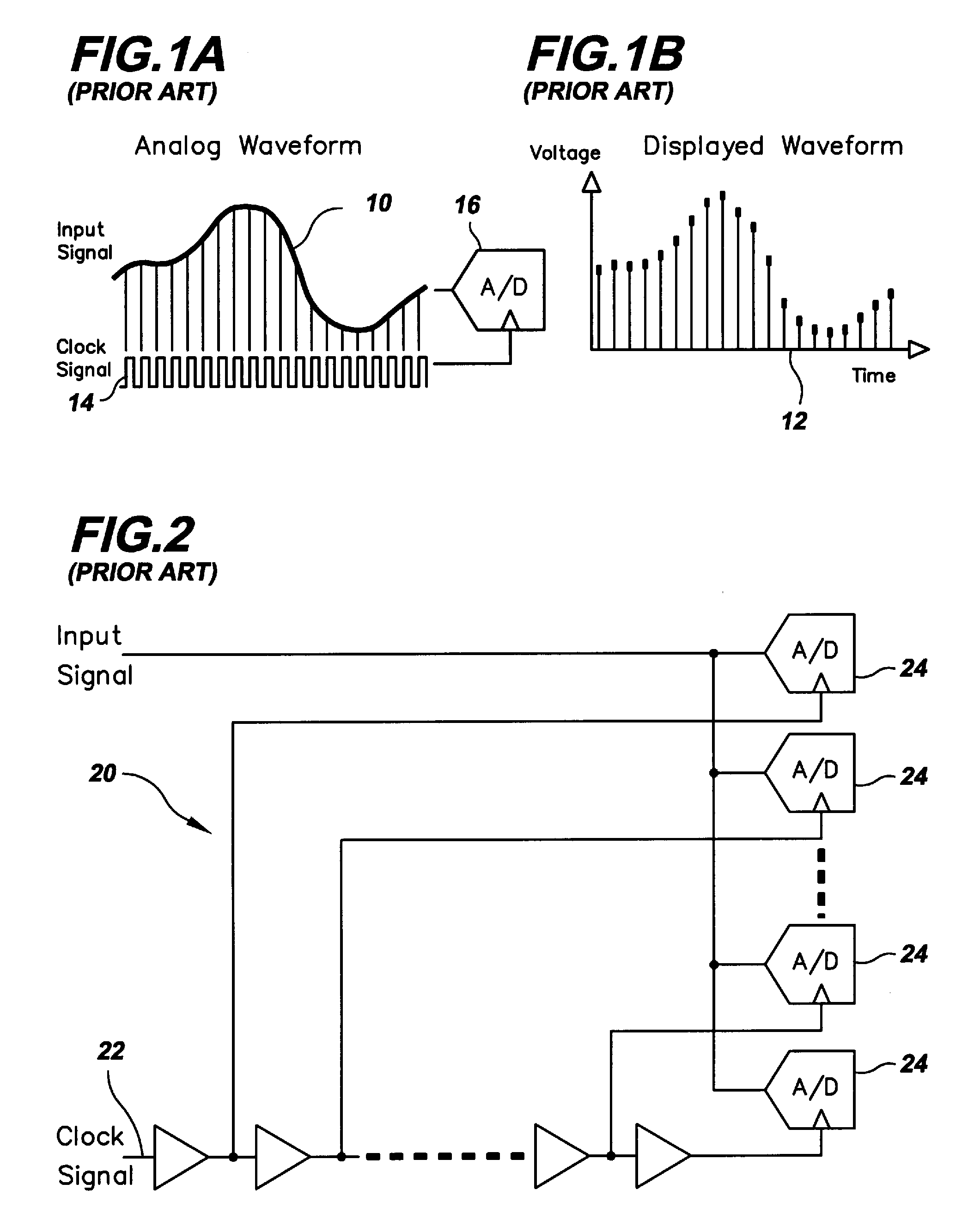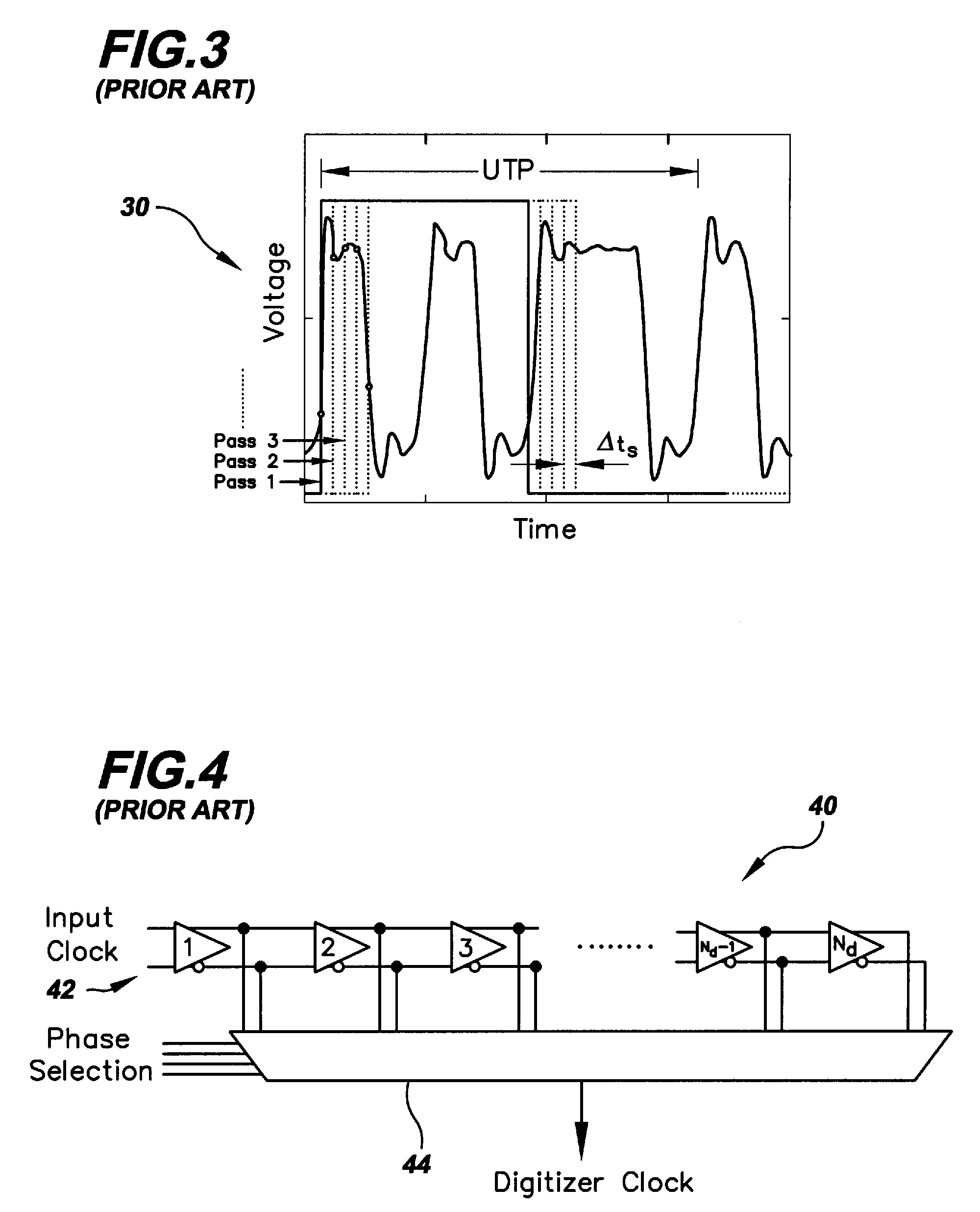Signal Integrity Measurement Systems and Methods Using a Predominantly Digital Time-Base Generator
a technology of time-base generator and signal integrity measurement, which is applied in the direction of noise figure or signal-to-noise ratio measurement, instruments, pulse techniques, etc., can solve the problems of circuit failure to operate correctly, current level, analog transients in voltage level,
- Summary
- Abstract
- Description
- Claims
- Application Information
AI Technical Summary
Benefits of technology
Problems solved by technology
Method used
Image
Examples
Embodiment Construction
1.0 Overview
[0039]For the purposes of various embodiments of signal-integrity measurement systems and methods of present invention, unique time-base generation techniques are utilized that can achieve 100 fsec sampling resolution, or less, while deploying extremely simple hardware. As described below, signal-integrity measurement solutions disclosed herein are free of various limitations that plague conventional testing systems, such as delay line non-linearity, area overhead, jitter, and even wander between offset frequency oscillators. Instead, the disclosed time-based generation techniques offer deterministic sampling instants at an extremely fine resolution. Fine resolution is defined here as any delay resolution that is less than the minimum attainable using conventional delay lines. These time-base generation techniques may be implemented in conjunction with various samplers and various digital signal collecting and processing techniques to enable extremely efficient signal-in...
PUM
 Login to View More
Login to View More Abstract
Description
Claims
Application Information
 Login to View More
Login to View More - R&D
- Intellectual Property
- Life Sciences
- Materials
- Tech Scout
- Unparalleled Data Quality
- Higher Quality Content
- 60% Fewer Hallucinations
Browse by: Latest US Patents, China's latest patents, Technical Efficacy Thesaurus, Application Domain, Technology Topic, Popular Technical Reports.
© 2025 PatSnap. All rights reserved.Legal|Privacy policy|Modern Slavery Act Transparency Statement|Sitemap|About US| Contact US: help@patsnap.com



